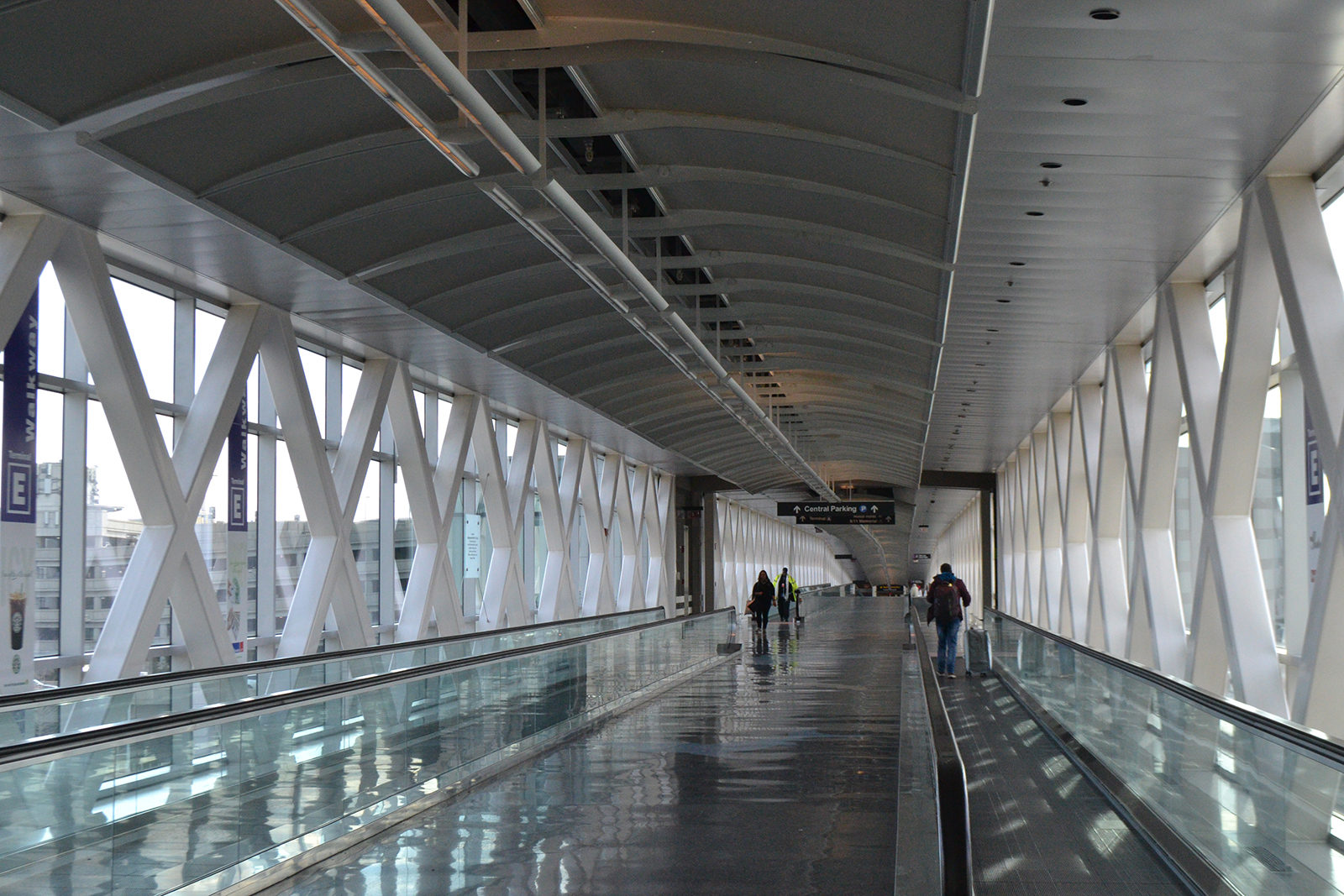
Officials at Boston Logan International Airport will spend $15 million to design and study a possible transit line that would transport travelers to and from terminals, the Blue Line, parking lots and the car rental center.
The “Automated People Mover” grew out of a 2015 proposal by the Massachusetts Port Authority to implement a moving sidewalk between Logan’s station on the Blue Line and Terminal E due to a sharp increase in international flights, The Boston Globe reported.
Joshua Hassol, a professor at Boston University’s Metropolitan College, said Logan’s current transportation operations may not be optimal and that the study would evaluate their current state.
“Logan Airport serves far more people now than it has in decades past,” Hassol said. “As a result, the systems it has in place for internal circulation of passengers may no longer be optimal.”
For any airport to function at its best as a transportation hub, Hassol said it needs to do more than simply accommodate flights — it needs to function well as a self-supporting entity that includes financial sustainability and optimal transportation.
“The feasibility study will most likely start by looking at current conditions and projected growth and assessing whether the existing systems can continue to serve the airport well,” he said.
Hassol said the current shuttle-bus connection to the Blue Line works, but if a new system could handle more passengers per hour, it would provide an important intermodal connection.
“All transportation systems are vulnerable to bottlenecks at places where people change from one mode to another,” Hassol said. “Optimizing intermodal connections can help tremendously to improve overall system performance.”
The study will likely include an analysis of the current Blue Line connection and compare it to the proposed system with regard to passenger capacity per hour, speed and wait time between vehicles, he said.
Sharon Cambra, 23, of Roxbury, said other airports across the world have successfully implanted monorail systems.
“Boston’s traffic is absolutely terrible around the airport, and sometimes getting to the airport can be such a hassle for people,” Cambra said. “Other airports, even if they aren’t as nice as the ones in the U.S., at least has a monorail system in order to keep the terminals connected smoothly.”
Despite the initial financial projections, Massport officials say the endeavor could cost more than $1 billion and take at least 10 years to complete, the Globe reported.
Even with $15 million going into research, airport officials say Massport could still conclude the endeavor as implausible, according to the Globe. With such a conclusion, officials could reconsider making a moving walkway or a smaller transit connection.
Maria Ming, 67, of Chinatown, said that if the monorail system could be similar to that of New Jersey’s Newark Liberty International Airport, she’d be pleased.
“Anything that increases the productivity of transportation is something that the City should be looking into,” Ming said. “It’s similar to how New Jersey has a train that transports travelers to the airport. The faster we can get more people around, the better.”
Sueanne McNeil, 39, of the North End, said the initiative has a chance to increase the number of Boston tourists, a positive that far outweighs the endeavor’s potentially high cost.
“The monorail system is great to ensure that travel for passengers is easy,” McNeil said. “We want people to come to our airport and say that it was a smooth travel and not complain that the worst part about their visit to Boston was the airport travel to and from.”
CORRECTION: A previous version of this article misquoted Joshua Hassol, who was commenting as a BU faculty member. An update version reflects this correction.





















































































































